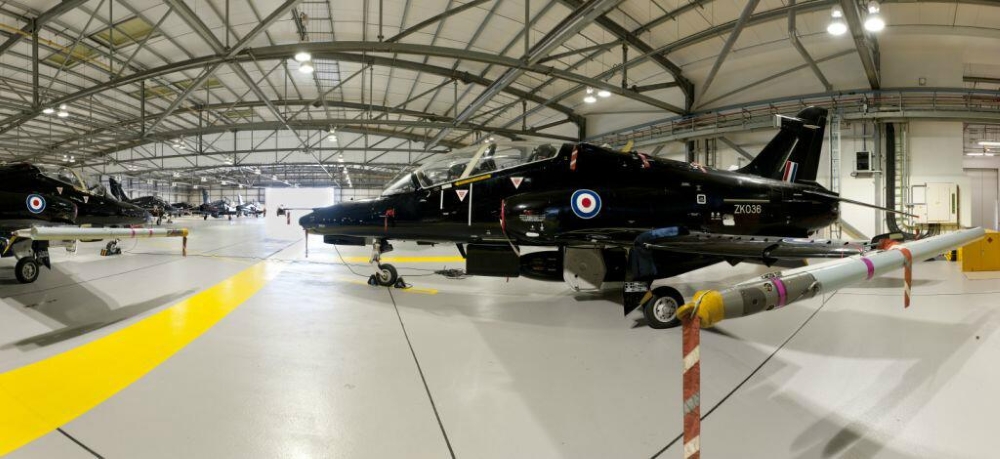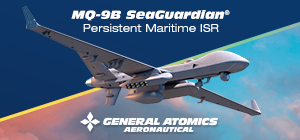
After the SDR endorsed the procurement of a “cost-effective” new jet trainer to replace both HAWK T1, now used exclusively by the RED ARROWS and the younger T2 used at RAF Valley for Advanced Fast Jet Training, government signalled that an “open competition” will be set up.
Procurement Minister Maria Eagle said, during oral questions in the House of Commons, that a team was taking shape at the MOD to launch the process.
While the aging HAWK T1 was always going to need a replacement by 2030, the much younger HAWK T2 was, until recently, due to serve on until 2040. Before the SDR, however, the Chief of the Air Staff had already gone public expressing his wish to see T2 replaced early, and when the new strategic paper was released, on June 2, it endorsed his view.
The HAWK T2 is the Advanced Jet Trainer for the UK armed forces and is employed by IV and XXV Squadrons at RAF Valley, in Wales. It should be noted that while the training service is delivered by the ASCENT consortium which delivers the whole UK Military Flight Training System, the HAWK Mk 128 Advanced Jet Trainer, known by the RAF as T2, was not chosen nor procured by ASCENT, unlike the other machines used in the training pipeline.
The UK MOD had procured the new HAWKs with a process that started in 2003 and led to contract in 2006, before the privatization of the delivery of training (2008). As a consequence, ASCENT’s role in Valley was, and remains, to deliver ground infrastructure, simulators and training as a service, while the MOD is responsible for providing to ASCENT an agreed number of serviceable HAWK T2s each day, through availability contracts with BAE Systems for the aircraft and Rolls Royce for the Adour engines.
The availability of the HAWK T2 has been problematic in the last few years because of serious design flaws that have emerged in the Adour engine specifically. It was on 25 March 2022 that Rolls Royce reported a “significant” issue in the Low Pressure Compressor (Module 01) of the Adour MK951 engine. The result was that the 4,000 hour planned design life of each engine was reduced to a clearance of just 1,700 hours.
This limitation immediately affected the number of serviceable engines available for the T2 fleet, leading to an average of just 8 serviceable aircraft being made available each day throughout FY22/23 and a revised forecasted outturn flying rate of approximately 3700 flying hours, which is circa 50% of the contracted levels.
The engine fixes and the fleet-wide recovery can only be gradual and was immediately forecasted to require at least circa 3 years. In 2024, the number of HAWK T2s routinely available climbed back to 11-12.
In order to mitigate the impact on the frontline, beginning in Fiscal Year 2022/23, the UK had to send pilots abroad for training, although in modest numbers: 7 in 2022/23, 8 in 2023/24, 7 in 2024/25.
BAE has a contract in place to support the availability of HAWK T2 out to 2033, and the deal comprised arrangements meant to facilitate a Capability Sustainment Programme to ensure the trainer remained valid out to 2040, but it now looks likely that no CSP will proceed and the OSD will be brought forward around a decade.
In this, the UK follows the Australian lead: the Royal Australian Air Force in fact intends to replace its own HAWK by circa 2032, although it should be noted that technically the Australian aircraft are Mk 127 jets, the last type before the “HAWK Advanced Jet Trainer (AJT)/T2” type took hold (with the Mk 128 for the UK). Other HAWK AJT users are expected to continue using the type for a much longer time, especially considering that some of them have only acquired the aircraft relatively recently. The main AJT users are India (Mk 132) and Saudi Arabia (Mk 165), with both nations having also acquired the ability to produce the aircraft locally. The very latest user, Qatar, ordered its 9 Mk 167 only in 2018 and received them beginning in 2021: all 9 jets are based in the UK, at RAF Leeming, forming a “joint” training Sqn.
The UK’s HAWK T2 fleet numbers 28 in total.
The HAWK T1 fleet numbers 17, of which 13 are routinely airworthy with the Royal Air Force Aerobatic Team, with another 4 at any one time being cycled through scheduled routine depth maintenance. Additional T1 aircraft are held in storage as sustainment fleet, to keep the fleet operational at least out to 2030.
There is, understandably, huge interest in the incoming competition, with many well-established options expected to formally vie for the contract. Leonardo will offer both M-345 and, more relevantly, its M346 Block 20; Turkey’s TAI will put forward its HURJET, Boeing and Saab are likely to propose their T-7 RED HAWK and South Korea’s T-50 might also formally make an attempt.
The government, especially in view of its much trumpeted “industrial strategy” and the promise that defence spending will benefit UK jobs, is however under great pressure to go with the one British option available, which is fascinating but risky. The start-up AERALIS, partially backed by Qatar funds, has been working for many years at the digital design of an advanced, highly modular and reconfigurable jet trainer aircraft, but no physical prototype yet exists. The concept revolves around a Common Core Fuselage (CCF) that, depending on role and requirement, can be fitted with different wings, tail and engine(s).
AERALIS has put together a very serious team of industry heavyweights that would contribute to making the new jet a reality. The “Aerteam” would see Hamble Aerostructures complete the design of the CCF and build it; StandardAero would equip the CCF; Honeywell/ITEC would provide the propulsion with its F124 engines, as well as the OBOGS oxygen system; Héroux-Devtek would provide the undercarriage and Martin Baker the ejection seats. Meanwhile, Leonardo would provide the large area display for the cockpit as used in the M346 Block 20, as well as the fly-by-wire system.
AERALIS has picked Glasgow’s Prestwick airport as the base where the assembly line would operate. The Company has tried to build up political support not just in the UK but in France as well, hoping to perhaps win a bi-national backing considering that Paris faces much the same headaches as London in terms of trainers and the need to re-qeuip the Patrouille de France.
AERALIS has great ambitions, but needs a customer commitment, and funding, this year. It is working to a critical design review (CDR), which it believes would be followed by a digital, and then a real, first flight 42 months following customer commitment. A test campaign of 2 years would then ensure, in order to start deliveries in 2030.








.png)
